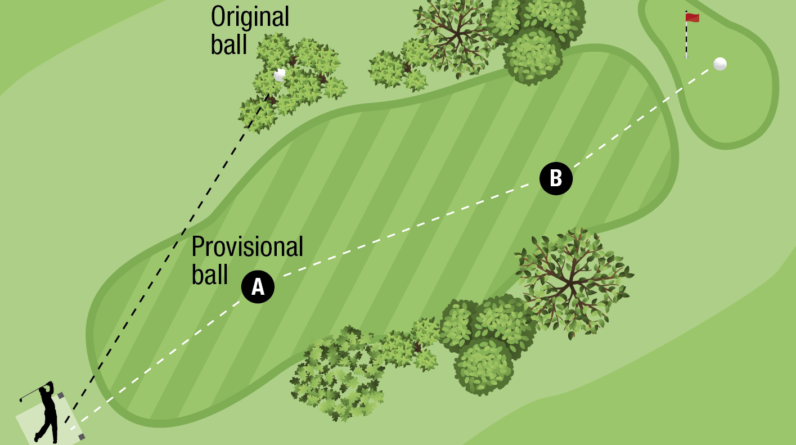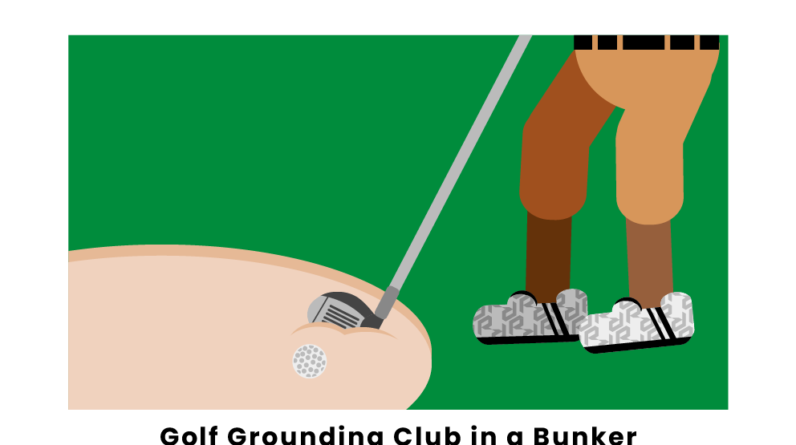Are you tired of spending endless hours waiting on the golf course? Slow play can be frustrating and can hinder your enjoyment of the game. But fear not, because in this article, we will discuss some effective strategies on how to handle slow play on the course. Whether you’re a casual player or a seasoned golfer, these tips will help you navigate through the delays and ensure that your golfing experience remains enjoyable. So sit back, relax, and let’s tackle the issue of slow play together!
Addressing Slow Play
Understanding the Impact of Slow Play on the Course
Slow play can have a significant impact on the overall golfing experience, both for individual players and those around them. When one group is playing at a slow pace, it can create a domino effect, causing delays for all the groups behind them. This not only disrupts the flow of the game but also leads to frustration and impatience among players. Slow play can also have a negative impact on the course itself, as excessive wait times can lead to increased wear and tear on the greens and fairways.
Recognizing the Factors Contributing to Slow Play
There are various factors that contribute to slow play on the golf course. One common factor is inadequate preparation before arriving at the course. This includes not being familiar with the course layout, not having the necessary equipment ready, or not allowing enough time to warm up before starting the round. Other factors include players spending too much time searching for lost balls, being indecisive in club selection, or taking excessive time to line up their shots. It’s important to understand these contributing factors to effectively address and prevent slow play.
Assessing Your Own Pace of Play
Before addressing slow play with others, it’s essential to assess your own pace of play. Take a moment to reflect on how long it takes for you to complete a round of golf. Are you consistently keeping up with the group in front of you, or do you find yourself frequently falling behind? Being honest with yourself about your own pace of play will help you identify areas for improvement and better equip you to discuss the issue with fellow golfers in a constructive manner.
Preventing Slow Play
Arriving at the Course Prepared
One of the most effective ways to prevent slow play is by arriving at the golf course adequately prepared. This involves familiarizing yourself with the course layout and any specific policies or procedures in place. Additionally, ensure that your golf bag is organized and that you have all the necessary equipment, such as tees, balls, and gloves, readily accessible. By being prepared, you minimize the time spent searching for items and can start your round promptly.
Following Course Policies and Etiquette
To maintain an efficient pace of play, it’s crucial to adhere to the course policies and etiquette. This includes observing the proper order of play, being aware of tee times, and not taking excessive practice swings. It’s also important to repair divots, rake bunkers, and read the green while others in your group are putting. Respecting these guidelines not only promotes a smooth flow of play but also creates a more enjoyable experience for all golfers on the course.
Playing Ready Golf
One effective strategy to prevent slow play is by adopting the concept of ready golf. Ready golf encourages players to proceed with their shots as soon as they are ready, rather than strictly adhering to traditional order of play. This means that if you are ready while another player is still preparing, you can go ahead and hit your shot. Ready golf reduces unnecessary waiting time, speeds up the pace of play, and keeps the game moving smoothly.
Minimizing Distractions
Distractions can significantly contribute to slow play on the golf course. To prevent these distractions, it’s important to silence your phone and avoid engaging in non-golf-related conversations during the round. Additionally, be mindful of your pace while walking between shots, ensuring you are ready to play as soon as it’s your turn. By minimizing distractions, you can stay focused and maintain a consistent pace of play.
Maintaining Awareness of Group Ahead
To prevent slow play, it’s crucial to maintain awareness of the group ahead of you. Pay attention to their pace and be ready to proceed as soon as they are out of range. This requires staying close to the group in front of you without rushing them. By keeping an appropriate distance and being ready to play, you minimize unnecessary wait times and ensure a more efficient flow of play for all golfers on the course.

Communicating with Other Golfers
Approaching the Issue Politely
When addressing slow play with fellow golfers, it’s important to approach the issue politely and respectfully. Avoid getting confrontational or placing blame, as this can lead to hostility and a negative playing atmosphere. Instead, choose a calm and friendly tone when raising concerns about the pace of play. Open communication and a non-confrontational approach are key to fostering a positive and constructive dialogue.
Discussing Pace of Play Concerns
Initiate a conversation about pace of play concerns in a proactive and assertive manner. While it can feel uncomfortable to raise the issue, discussing it openly allows all players to understand the impact of slow play and work collaboratively towards a solution. Ask your fellow golfers if they have also noticed any delays and if they share the same concerns. This discussion can help create a shared understanding and commitment to resolving the issue.
Offering Solutions and Suggestions
When discussing slow play, it’s essential to offer potential solutions and suggestions to address the problem. For example, suggest playing ready golf, being mindful of each player’s pace, or implementing a time limit for certain shots. By offering practical ideas, you contribute to a constructive conversation focused on finding effective strategies to improve the pace of play. Remember, collaboration and compromise are key in resolving the issue.
Emphasizing the Shared Experience
Highlighting the shared experience of golf can help foster a more positive and understanding environment when discussing slow play. Emphasize how everyone on the course is there to enjoy the game, and that a smooth and efficient pace of play enhances the overall experience for all golfers. By emphasizing the collective enjoyment and the benefits of maintaining a timely pace, you can encourage a sense of camaraderie and motivate players to actively address slow play.
Dealing with Deliberate Slow Play
Recognizing Intentional Slow Play
While slow play is often unintentional, there are instances where deliberate slow play occurs. Recognizing intentional slow play is crucial in order to effectively address the situation. Signs of intentional slow play may include consistently ignoring requests from other players to speed up, deliberately stalling between shots, or intentionally causing delays. When you encounter deliberate slow play, it’s important to handle the situation with composure and sportsmanship.
Maintaining Composure and Sportsmanship
When faced with deliberate slow play, it’s crucial to maintain composure and uphold the principles of sportsmanship. Avoid engaging in confrontations or becoming frustrated, as this can escalate the situation and create a negative playing atmosphere. Instead, focus on your own game and continue adhering to the principles of efficient play. Remember, your conduct and attitude set an example for others, and responding with sportsmanship can help diffuse tension and facilitate a resolution.
Seeking Assistance from Course Staff
If deliberate slow play persists despite your efforts to address it, it may be necessary to seek assistance from the course staff. They are responsible for ensuring a smooth flow of play and can intervene if necessary. Approach the staff politely and explain the situation, providing them with specific examples of the deliberate slow play you have witnessed. The course staff can then assess the situation and take appropriate action to address the issue.
Following Proper Procedures and Protocols
In situations of deliberate slow play, it’s essential to follow the proper procedures and protocols established by the golf course. Each course may have its own designated process for dealing with such issues, which may involve warning or penalizing players who consistently engage in deliberate slow play. By adhering to the established protocols, you contribute to upholding the integrity of the game and ensuring a fair and enjoyable experience for all golfers.

Strategies for Managing Slow Play
Staying Mentally Engaged
To manage slow play effectively, it’s important to stay mentally engaged throughout your round. Instead of getting frustrated or losing focus, channel your energy into maintaining a positive mindset and actively participating in the game. Stay present and focused on each shot, visualize your desired outcome, and make decisions efficiently. By staying mentally engaged, you can better manage the pace of play and ensure a smooth flow on the course.
Using Time Efficiently
Time management is crucial in managing slow play. Use your time efficiently by making decisions promptly, preparing in advance for your shots, and taking practice swings sparingly. Avoid unnecessary delays, such as excessive searching for lost balls or prolonged discussions about strategy. By using time efficiently, you contribute to a faster pace of play and maintain the momentum of the game.
Remaining Flexible and Adaptable
Flexibility and adaptability are key traits when it comes to managing slow play. Be prepared to adjust your own pace according to the circumstances on the course. If you notice the group ahead playing at a particularly slow pace, be flexible and adapt your game accordingly. Likewise, if you find yourself falling behind, make a conscious effort to speed up and catch up to the group ahead. Being flexible and adaptable helps maintain a harmonious flow of play for all golfers.
Managing Frustration and Impatience
Slow play can often lead to frustration and impatience, but it’s important to manage these emotions effectively. Recognize that slow play is a common issue and that becoming frustrated will not resolve the problem. Instead, focus on the aspects of the game that bring you enjoyment, such as the beauty of the course, the camaraderie with fellow golfers, or the satisfaction of making a good shot. By shifting your mindset and managing your emotions, you can maintain a positive attitude despite any delays.
Emphasizing Enjoyment over Speed
While speed of play is important, it’s equally important to prioritize enjoyment and fun on the golf course. Remember that golf is a game meant to be savored and that the process is just as rewarding as the outcome. By emphasizing enjoyment over speed, you can approach slow play with a more patient and relaxed attitude. Maintain a sense of perspective and appreciate the opportunity to spend time outdoors, honing your skills, and engaging in a beloved pastime.
Implementing Pace of Play Techniques
Establishing a Routine and Pre-shot Preparation
Establishing a routine and consistent pre-shot preparation is an effective technique to maintain a steady pace of play. Develop a pre-shot routine that suits your game and follow it consistently for each shot. This routine can include visualizing your shot, aligning your stance, taking a few practice swings, and addressing the ball. By establishing a routine, you can streamline your decision-making process and minimize unnecessary delays.
Selecting the Right Club Efficiently
Delays due to indecisiveness in club selection can significantly contribute to slow play. To avoid this, develop a systematic approach to selecting the right club efficiently. Consider factors such as distance, wind conditions, and course layout when making your decision. Avoid overthinking and trust your instincts. By committing to a club choice and selecting it efficiently, you can maintain a steady pace of play and keep the game moving smoothly.
Walking or Driving Between Shots
Choosing whether to walk or drive between shots can impact the pace of play. Assess the distance between shots and make a conscious decision based on your physical capabilities and the course conditions. Walking allows for a more continuous flow of play and eliminates the need to wait for a golf cart. However, if the distance between shots is significant, utilizing a golf cart can help maintain a timely pace. Consider the course layout and choose the most appropriate mode of transportation to minimize unnecessary delays.
Utilizing Technology to Monitor Pace
Technology can be a valuable tool in monitoring and maintaining proper pace of play. Many golf apps and GPS devices offer features that display the estimated time of completion for each hole or round. These features allow you to track your progress and ensure you are maintaining an appropriate pace. Utilize technology to monitor your own pace and make adjustments as needed to stay on track.

Efficient Golf Course Navigation
Navigating Between Holes Strategically
Efficient navigation between holes is essential for maintaining a timely pace of play. Familiarize yourself with the course layout and plan your route accordingly. Identify the shortest and most direct paths between greens and tees, avoiding unnecessary detours. Consider factors such as the location of restrooms, water stations, and food outlets to plan your navigation effectively. By strategically navigating the course, you can minimize travel time and maintain an efficient pace of play.
Knowing Local Course Layout and Distances
Having a good knowledge of the local course layout and distances is advantageous when it comes to managing slow play. Study course maps, consult yardage guides, or use GPS devices to familiarize yourself with the layout and distances of each hole. By knowing the intricacies of the course, such as potential hazards or areas prone to slow play, you can adjust your strategy and be better prepared to navigate efficiently.
Utilizing Course Maps or GPS Devices
Course maps or GPS devices can be invaluable tools in efficient golf course navigation. Many courses provide maps or GPS devices, allowing you to accurately determine distances and plan your shots accordingly. Take advantage of these resources to make informed decisions, navigate the course efficiently, and reduce delays. By utilizing course maps or GPS devices, you can enhance your performance and maintain an appropriate pace of play.
Avoiding Excessive Searching for Lost Balls
Excessive searching for lost balls can significantly contribute to slow play. While losing a ball is unfortunate, it’s important to strike a balance between thoroughness and efficiency when searching. Allocate a reasonable amount of time to locate a lost ball, but avoid spending excessive time searching if it becomes unproductive. If necessary, drop a provisional ball to maintain the flow of play and avoid causing delays for others. By minimizing the time spent searching for lost balls, you promote a more efficient pace of play for yourself and others.
Creating a Positive Playing Environment
Maintaining Positive Attitude and Demeanor
Creating a positive playing environment starts with maintaining a positive attitude and demeanor. Approach each round with a mindset focused on enjoyment, camaraderie, and personal growth. Embrace the challenges of the game and maintain a supportive attitude towards your fellow golfers. By radiating positivity, you contribute to a more pleasant atmosphere on the course and help alleviate any tensions that may arise due to slow play.
Keeping Conversations Friendly and Respectful
Engaging in friendly and respectful conversations with your fellow golfers can foster a positive playing environment. Use this opportunity to get to know your playing partners better, share stories, and enjoy light-hearted conversations. However, be mindful of the pace of play and avoid engaging in lengthy or distracting discussions while on the course. By striking a balance between friendly conversation and mindful play, you contribute to a positive atmosphere without slowing down the game.
Encouraging and Supporting Fellow Golfers
Encouragement and support go a long way in creating a positive playing environment. Acknowledge good shots, offer words of encouragement, and celebrate successes with your fellow golfers. Be supportive during challenging moments and offer help or advice when appropriate. By fostering a sense of camaraderie and unity, you contribute to a positive atmosphere that encourages everyone to enjoy the game and work together towards an efficient pace of play.
Promoting a Sense of Camaraderie
Camaraderie is an integral part of the golfing experience. Foster a sense of camaraderie among your fellow golfers by creating a friendly and inclusive atmosphere. Engage in small talk, share a laugh, and express appreciation for each other’s company. By promoting a sense of camaraderie, you enhance the overall enjoyment of the game and encourage a collective effort towards maintaining an efficient pace of play.

Educating and Promoting Pace of Play
Raising Awareness Among Golfers
Raising awareness about the importance of maintaining a proper pace of play is crucial in addressing the issue. Engage in conversations with other golfers, both on and off the course, and discuss the impact of slow play. Share personal experiences and the strategies you have found effective in managing pace. By raising awareness, you encourage a collective commitment to maintaining a timely pace and create a culture that values efficient play.
Sharing Tips and Strategies for Faster Play
Share tips and strategies for faster play with fellow golfers, particularly those who may be new to the game or have struggled with slow play in the past. Communicate the importance of ready golf, proper time management, and adherence to course policies and etiquette. Offer suggestions on how to streamline decision-making, optimize club selection, and navigate the course efficiently. By sharing your knowledge and experience, you empower others to actively address slow play and contribute to a more efficient pace on the golf course.
Involvement in Course-organized Activities
Take an active role in course-organized activities that promote pace of play. Participate in tournaments, leagues, or clinics that prioritize efficient play. These activities often emphasize the importance of a timely pace and provide opportunities to learn and practice the techniques of faster golf. By getting involved, you demonstrate your commitment to maintaining an efficient pace and inspire others to do the same.
Participating in Pace of Play Initiatives
Support and participate in pace of play initiatives organized by golf associations, courses, or communities. These initiatives often involve educational programs, campaigns, or special events that raise awareness and provide resources for managing pace. By actively participating, you contribute to a collective effort to improve pace of play and create a more enjoyable golfing experience for all.
Conclusion
Addressing slow play on the golf course requires awareness, understanding, and effective communication. By recognizing the factors that contribute to slow play, implementing preventive measures, and promoting a positive playing environment, you can contribute to a more efficient pace of play. Utilizing strategies for managing slow play, implementing effective techniques, and assuring proper course navigation, you can enjoy the game while maintaining a timely flow. By educating and promoting pace of play among fellow golfers, you foster a culture that values efficient play and enhances the overall golfing experience for everyone. Remember, it’s a shared responsibility to address and prevent slow play, and your efforts can make a significant difference on the course.







